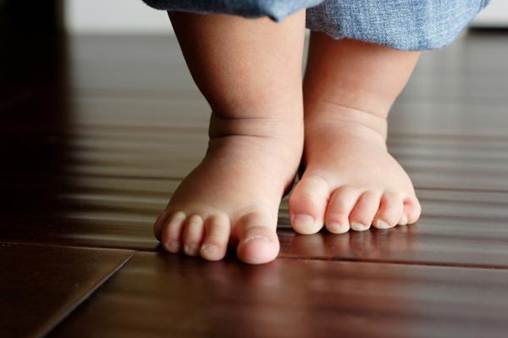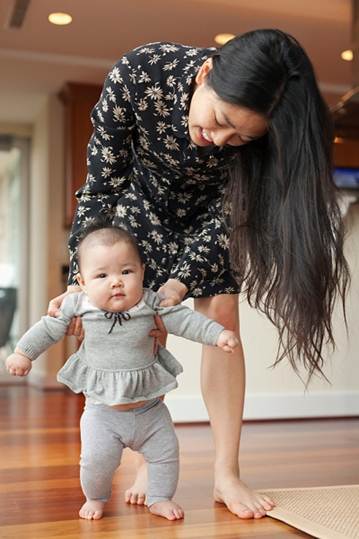Most of children know how to walk by the time they are 13
months old, some know sooner (9-10 months old), some know later (15-16 months
old).
There’re many parents obsessed with questions of other
people: “Does the baby walk?” or the fact that their children start walking
later than others. The moment when babies take their first step is different
from each other but often around 9-15 months old.
1.
The moment when children start walking is different
Most of children know how to walk by the time they are 13
months old, some know sooner (9-10 months old), some know later (15-16 months
old).

Most of children
know how to walk by the time they are 13 months old.
2.
Three stages of practicing walking in children
Sitting: at about 6 months old, limb muscles are ready for
children to start sitting.
Upholding the body with hands and raising the behind up:
it’s different between children often happens when children reach 10 months
old.
Standing with hands facing on a chair: The time children
start standing with their hands facing object to uphold the body is different among
children. It starts with the curiosity in subjects surrounding children, and
naturally, they lean up and press their hands on the subjects, beginning learning
how to stand.
3.
The first steps
The first steps happen when children are able to lift a leg
and lean it in the front while the other is standing still for the balance. Of
course, at the beginning, children need help from parents.
To be well in walking, it’s required that the muscles are
firm enough, and babies need to know how to loose the hip and knees. The most
difficult matter that children have to face when starting walking is that
children often strain the knees while walking, which makes them fail in keeping
balance. Therefore, they tend to fall or walk vacillatingly.

From the 12th
month goes, the walking gets much better.
From the 12th month goes, the walking gets much
better. You don’t have to wait for long till children are able to toddle around
the house.
4.
When children know how to walk…
It sounds mythical but some parents misunderstand that the
fact that their children know how to walk sooner than other same-ages relates
to the fact that the children will have better learning results. Knowing how to
walk soon or late may affect children’s developments, according to which
parents should take children to a doctor if they don’t walk when 16 months old.
However, the connection between the sooner success in walking and being a
genius is still unrevealed. There’re some children that can walk well while
others keep failing. There’re children who take lots of time before knowing how
to walk, so it’s completely normal.
5.
Facts that affect children’s practicing walking
Weight: Overweight children often start walking later
than others as they have to face more difficulties in keeping the balance while
standing than children who have normal weight.
Ear infections: If your children are about 6 months
old or older but still don’t know how to walk, you may want to consider that
the children are having diseases. Ear infections can affect the ability of
balancing the body, making children unable to walk.
Siblings: Children who learn walking with their
siblings often take less time to walk well. That’s because generally children
tend to imitate things, so by the attempt to play with their siblings, children
will be fond of walking.

There’re many
elements affecting children’s learning-to-walk.
6.
Sometimes, children get back to crawling
Many children like combining the crawling with learning to
walk. When they toddle, they suddenly stop and turn to crawling. Parents do not
need to worry as at the first stage of practicing
walking, children are unable to differentiate walking and crawling.
If seeing something interesting,
they are immediately attracted and turn to crawling quickly to run after it.
Maybe they are thinking that walking is too slow and crawling is faster.
7.
Having difficulty stopping walking
The
next challenge of practicing walking is how to stop walking so as not to fall. Most of children who start walking fall when they
stop walking. In comparison to adults, a step of children need an extreme
strength because they haven’t been able to fold knees, combine the movements of
heels and toes. Besides, children haven’t known that they need to stop a leg
and replace the other at balanced position to make the stop complete.
8.
Let children learn to walk with bare feet
Bare feet help children walk easier than ones wearing shoes
as they help children contact directly with floor (ground). If children succeed
in walking with bare feet on surfaces that are not so safe, parents should let
them get used to walking with shoes. You should choose shoes that provide children
with flexibility by curving the shoes. If the shoes have good elastic material,
they are suitable ones.